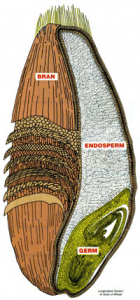 If you have read many of my articles on whole wheat and grains or have listened to my weekly radio show, you know that I am a strong advocate of using whole wheat. Years ago, I stopped purchasing bagged flour from the store because I believe the nutritional value of whole wheat is important for my family.
If you have read many of my articles on whole wheat and grains or have listened to my weekly radio show, you know that I am a strong advocate of using whole wheat. Years ago, I stopped purchasing bagged flour from the store because I believe the nutritional value of whole wheat is important for my family.
When you consider what is missing from bagged flour, you will understand the reason I am so supportive of milling fresh whole grains. Consider the following:
What nutrients are in a bag of flour that has been sitting on the shelf? We can take into consideration the fact that we know from what has been removed, it is NOT 100% of the nutrients as if the whole kernel were consumed.
The inner part of a Whole wheat kernel (known as the ‘endosperm’) consists of mostly starch. This is the source of white flour. Although the endosperm is about 83% of the whole kernel’s mass – it contains:
only 43% of its pantothenic acid
only 32% of its riboflavin
only 12% of its niacin
only 6% of its pyridoxine
only 3% of its thiamine
and only about 70-75% of the whole kernel’s protein
So it bears to ask the question… “Why eat only a portion of these vital nutrients when a whole grain contains 100% of them?”
We have been lulled into the “supposed convenience” of purchasing flour on the shelf. These percentages are not even taking into account that there is an oxidation process AFTER the white flour sits on the self for very long – that further depletes the nutritional value of what little is left.


